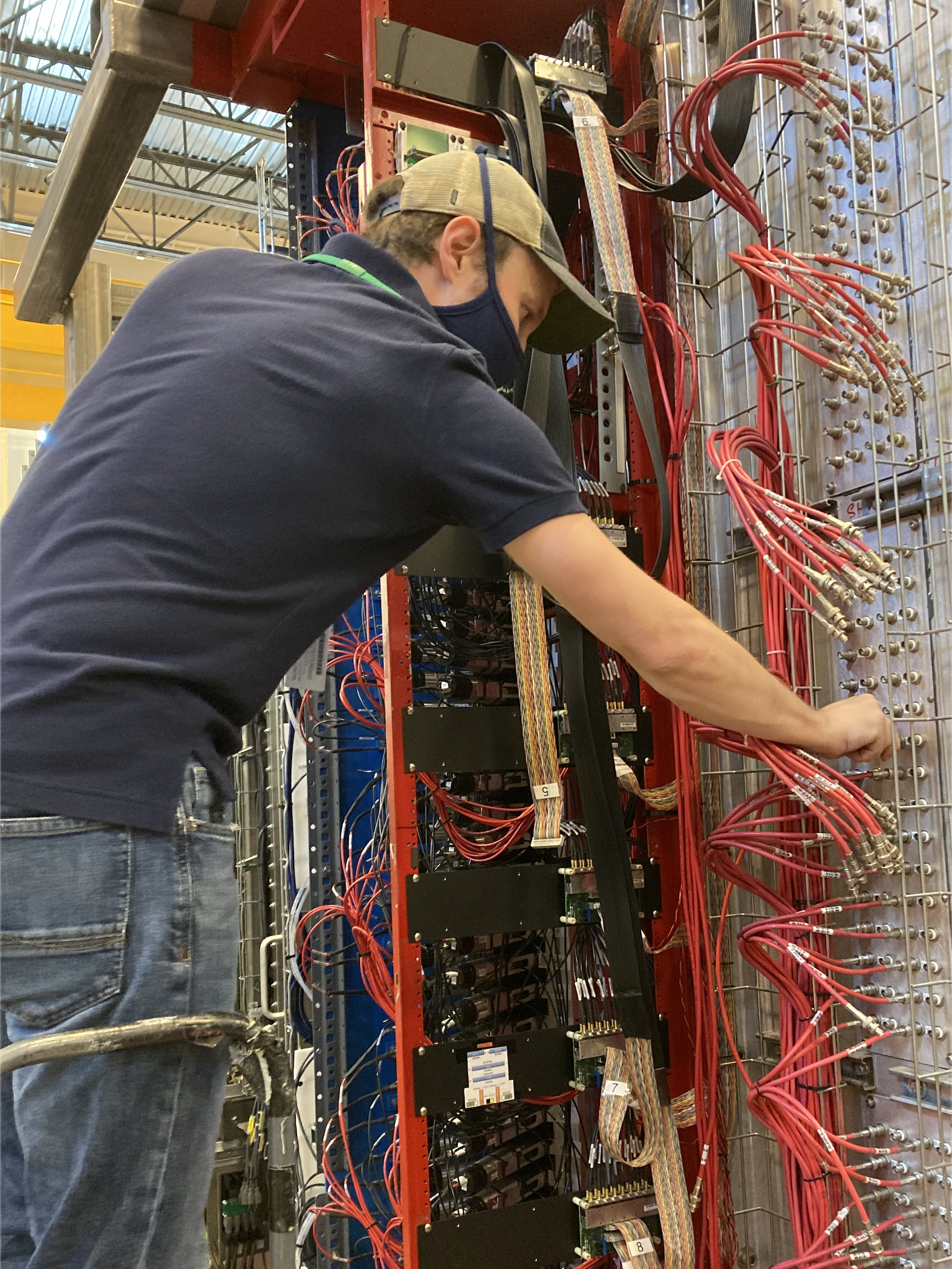
Welcome!
I'm a sixth-year graduate student working on a PhD in experimental nuclear physics under the supervision of Prof. Andrew Puckett. My research is focused on better understanding the electric and magnetic structure of nucleons via fixed-target electron scattering at Thomas Jefferson National Accelerator Facility. . Using the unique capabilities of the accelerator there, along with the Super BigBite Spectrometer (SBS), we are capable of taking exciting measurements of the proton and neutron form-factors (GMn, GEn, and GEp), which will inform fundamental questions about the quark structure of the nucleon and how electrons interact during collisions with them - the latter of which is the topic of my research (nTPE).
Beyond nTPE and form-factors, I'm interested in machine learning, detector construction and design, signal processing, monte-carlo simulations, and other topics.
I'm happy to connect with students or faculty! Please reach out to me at my UConn email address if you're interested in this research or if you're interested in the group.
Education
Ph.D. Physics (expected 2024), University of Connecticut, Storrs, CT
Master's of Science Physics (2020), University of Connecticut, Storrs, CT
Bachelor's of Arts double major Physics/Philosophy (2014), University of Colorado, Boulder, CO
Associate's of Arts (2010), Florida State College at Jacksonville, Jacksonville, FL
Contact Info
| Phone: | 303.775.7462 |
|---|---|
| E-mail: | sebastian.seeds@uconn.edu |
| Address: | Department of Physics University of Connecticut unit 3046 196 Auditorium Road, Storrs, CT 06269-3046 (USA) |
UConn Physics Events
-
Mar
7
UConn Physics Colloquium 3:30pm
UConn Physics Colloquium
Friday, March 7th, 2025
03:30 PM - 04:30 PM
Gant West Building
Prof. Ronald Garcia Ruiz, MIT
Title and abstract TBA
-
Mar
14
UConn Physics Colloquium 3:30pm
UConn Physics Colloquium
Friday, March 14th, 2025
03:30 PM - 04:30 PM
Gant West Building
Dr. Jesus Perez Rios, Stony Brook University
Title and abstract TBA
-
Apr
4
UConn Physics Colloquium 3:30pm
UConn Physics Colloquium
Friday, April 4th, 2025
03:30 PM - 04:30 PM
Gant West Building
Dr. Maxim Pospelov, University of Minnesota
Title and abstract TBA